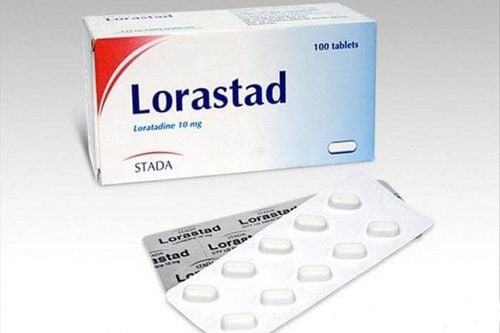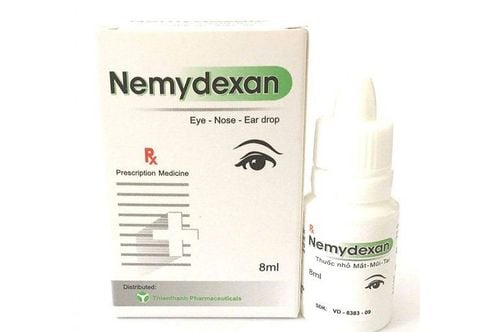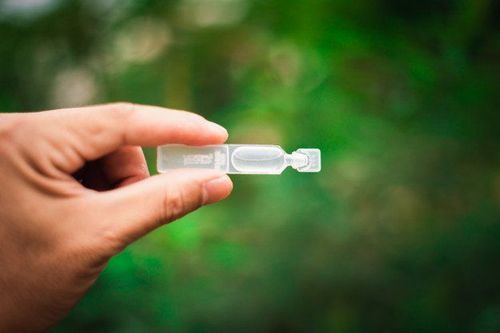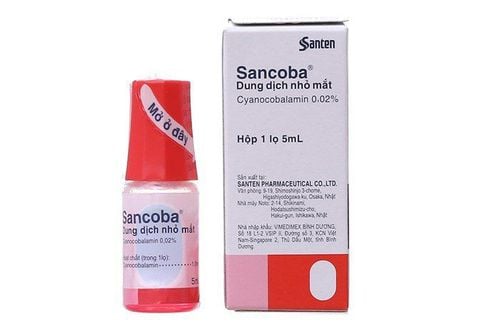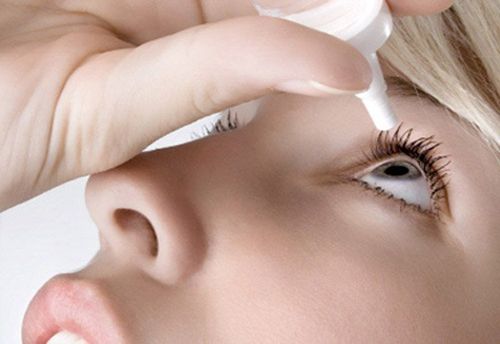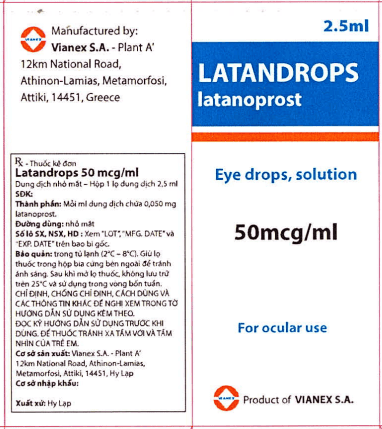This is an automatically translated article.
The article was professionally consulted by CKI Doctor Nguyen Thi Bich Nhi - Department of Medical Examination & Internal Medicine - Vinmec Nha Trang International General HospitalPink eye or conjunctivitis is an inflammation of the inside of the eyelids that causes blood vessels to become visible and give the eye a pink or red color. Newborn pink eye is not uncommon as it is common at any age. At this time, the child may feel itchy in the eye, and at the same time, there is quite a lot of discharge in the corner of the eye.
1. Causes of red eyes in babies
Pink eye can be caused by an eye infection or exposure to irritating chemicals. Usually, the cause of pink eye in babies is a viral or bacterial infection, or a natural allergy.
Newborn pink eye can appear 1 day to 2 weeks after birth. The disease causes the eyes to become red and swollen. There are many causes of this condition such as: blocked tear ducts, viral infections, bacteria transmitted from mother to child during labor... Specifically as follows:
1.1. Chlamydia pink eye This is caused by the bacteria chlamydia trachomatis, which can cause pink eye and genital infections. Pregnant women with this disease, if left untreated, can pass it on to their babies during delivery.
Common symptoms of conjunctivitis in infants caused by chlamydia are red eyes, swollen eyelids, and discharge. These symptoms may appear within 5-12 days after birth. About 50% of cases of pinkeye in infants caused by chlamydia also involve infections in other parts of the body such as the lungs and nasopharynx.
1.2. Pink eye caused by gonorrhea Similar to pink eye caused by chlamydia, pink eye caused by gonorrhea can also be passed from mother to baby during childbirth. The disease will start 2 to 4 days after birth with symptoms such as red eyes, swollen eyelids and thick pus in the eyes. This newborn pink eye can lead to very serious blood infections (bacteremia) and infections of the lining of the brain and spinal cord (meningitis).
1.3. Pink eye caused by irritation with medication Some eye drops specifically designed for babies to prevent bacterial infections can cause irritation. In this case, the child's eyes may be slightly red and slightly swollen.
1.4. Other causes Some other viruses and bacteria in the mother's body can cause pinkeye in newborns, such as those that live in the vagina (although not sexually transmitted), the virus that causes genital herpes. sex...

Một số virus, vi khuẩn khác trong cơ thể người mẹ có thể gây đau mắt đỏ ở trẻ sơ sinh
2. Signs of pink eye
Common signs of pink eye in babies such as:
2.1 Red eyes The first sign of the disease is the white part of the eye turns red or pink. This occurs due to inflammation of the small blood vessels on the surface of the eye. Pink eye usually starts in one eye, but then spreads to the other eye within 24 to 48 hours. The inside of the eyelid is also abnormally red, which parents can check by gently pulling the lower eyelid down to see.
2.2 Mucus and watery eyes When the eyes start to become red, the eyes also appear mucus or discharge that is yellow, white or green. The mucus begins to thicken at the corners of the eye, eventually covering the entire surface of the eye. When children wake up in the morning, it will be difficult to open their eyes due to the accumulation of mucus in the eyes.
2.3 Swollen eyes When the inflammation of the eyelids caused by pinkeye becomes severe, the eyelids and the area around the eyes become swollen. Swollen eyes are so severe that it is difficult for children to open their eyes.
2.4 Symptoms limited to the eye Pinkeye is an infection that occurs only in the eye. Pink eye doesn't cause fever, fatigue, poor appetite, or any other overall symptoms.
Parents need to take their child to see a doctor immediately if:
The child's eyes are getting redder and swollen. Eye rust is dark yellow or green. The baby is constantly crying and has a high fever. There is a membrane in the baby's eye. After 5 days, the child's pink eye still has no signs of improvement.
3. How to cure red eye effectively for babies
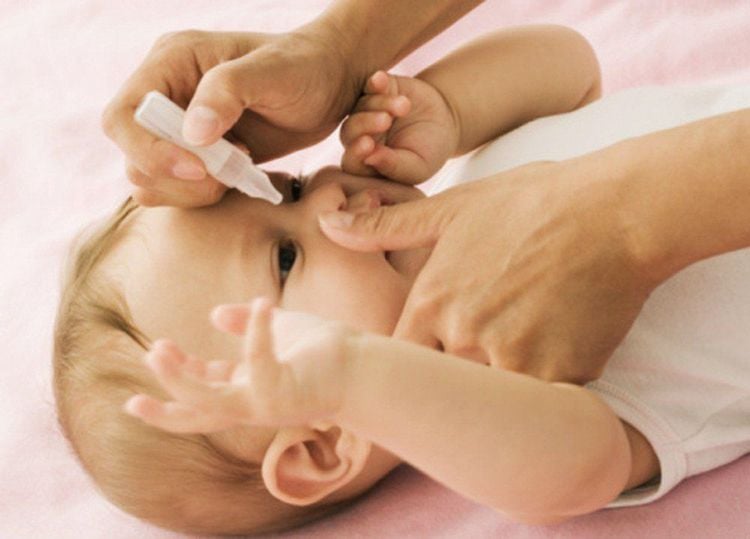
Một số tình trạng có thể dùng thuốc kháng sinh dạng thuốc nhỏ mắt hoặc thuốc mỡ tra mắt
Doctors can treat newborn pinkeye caused by a bacterial infection. Treatment will depend on the severity of the infection and the cause. For some mild conditions antibiotics are used as eye drops or ointments. Other antibiotics are given orally or intravenously.
Treatment of severe neonatal conjunctivitis can combine topical drops, oral antibiotics, intravenous injection. Rinsing the infected eye with a saline solution will remove the accumulated purulent eye rust and remove the pathogens.
Conjunctivitis caused by blocked tear ducts can be treated by gently massaging between the eyes and the nose area. If the disease does not clear up after 1 year of age, the child may need intervention with routine procedures...
Specific treatment for each group of pink eye causes is as follows:
Chlamydia conjunctivitis Common oral antibiotics to treat conjunctivitis, including erythromycin. Topical treatment alone is not effective because it does not eliminate the bacteria in the nasopharynx of infants and these bacteria can lead to life-threatening pneumonia if not treated properly.
However, the therapeutic efficacy of systemic erythromycin is about 80%, so it is often combined with a topical antibiotic (erythromycin ointment) as an adjunct.
Gonococcal conjunctivitis Often combined with drops, aggressive medication, severe conditions should consider intravenous antibiotics to treat gonococcal conjunctivitis. If left untreated, babies can develop corneal ulcers (open sores in the cornea) that can lead to blindness.
Allergic conjunctivitis Because this type of conjunctivitis is caused by irritation of the drops, it is usually necessary to stop instilling and change the medication. Newborns usually get better in 24 to 36 hours. Care with nutrients to protect eyeballs.
Other bacterial and viral conjunctivitis Use appropriate antibiotic drops or ointment to treat conjunctivitis caused by bacteria other than Chlamydia trachomatis and Neisseria gonorrhoeae. Topical antibiotics may be considered if secondary bacterial infection is present in cases of congenital anomalies.
Viral conjunctivitis treatment is mainly supportive of reducing irritation with anti-inflammatory drugs, and at the same time using lubricating drugs to protect the eyeball, reducing eye irritation.
As soon as a child is suspected of having pink eye, parents should take the child to the doctor. The doctor will examine the child's eye condition and prescribe treatment on a case-by-case basis. Parents also need to wash their hands often, especially before and after parents check their children's eyes to prevent infection from spreading.
Pink eye is a fairly contagious disease, so parents need to be careful so that other members of the family do not catch the disease from their children. When a child has pink eye, parents should keep the child at home, not in public places. You also need to regularly wash the baby's bed sheets, towels and face cloths.
Please dial HOTLINE for more information or register for an appointment HERE. Download MyVinmec app to make appointments faster and to manage your bookings easily.




